League endorses legislation that seeks to stem massive loss of ancient trees to catastrophic fire
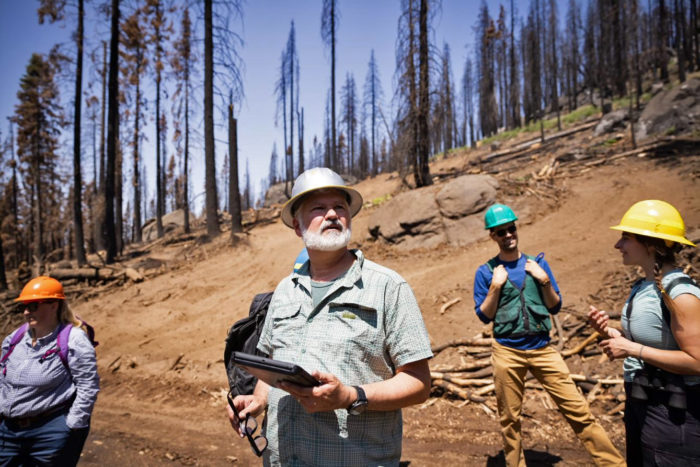
A bipartisan group of legislators today introduced new legislation to stem the massive, unprecedented loss of giant sequoias to catastrophic wildfire. Among other actions, the Save Our Sequoias Act declares an emergency to expedite much-needed work on the ground. Save the Redwoods League has endorsed the legislation.
An estimated 20% of all the mature giant sequoias in the world have been lost since 2015, when wildfire magnitude and severity sharply increased in California’s Sierra Nevada. Many of these trees were more than 1,000-3,000 years old. As wildfires in the West have reached unparalleled severity, they pose an existential threat to giant sequoias, some of our most iconic national treasures. Having thrived through countless fires over millennia, thousands of these trees have perished in today’s climate-driven fires.
“The Save Our Sequoias Act is assertive legislation that meets the emergency that we’re facing in California’s giant sequoia groves,” said Sam Hodder, President and CEO of Save the Redwoods League. “The status quo is unsustainable, and this legislation provides our park and forest stewards on the ground with science-based tools and the flexibility they need to save our sequoias.”
Between natural fires and Indigenous cultural fires across millennia, giant sequoias evolved to thrive with low- to moderate-intensity fires occurring every 8-15 years. The protective bark of a mature tree can be up to 2 feet thick, and fire helps their cones open and release seeds, fostering reproduction. However, for over 100 years, state and federal policies have been to extinguish almost every Sierra Nevada fire as soon as it ignites. This suppression and historic land management practices have combined to create unnaturally high densities of understory and midstory trees in giant sequoia groves.
Combined with the drier conditions and longer fire seasons associated with drought and climate change, the result is a tinderbox in our groves. Severe fire entering these dense groves burns up through the younger trees and into the canopies of mature sequoias, killing them. Unlike its coast redwood cousins that can resprout from living roots, when a 2,000-year-old giant sequoia dies, it is gone forever.
Earlier this month, Save the Redwoods League called on lawmakers to take urgent action to address the growing crisis in the giant sequoia groves.
The Save Our Sequoias Act was introduced into the House of Representatives with endorsements from more than 20 lawmakers on both sides of the aisle.
The emergency declaration codifies existing emergency procedures, expedites environmental reviews and consultations, and maintains robust scientific analysis. Other parts of the proposed legislation will:
- Enhance coordination between federal, state, tribal, and local land managers through shared stewardship agreements and the codification of the Giant Sequoia Lands Coalition, a partnership between the current giant sequoia managers.
- Create a Giant Sequoia Health and Resiliency Assessment to prioritize and inform forest management projects, track project implementation, and study giant sequoia health and resiliency over time.
- Provide funding and establish a new grant program to support the implementation of forest restoration projects in and around giant sequoia groves.
- Establish a comprehensive reforestation strategy to regenerate giant sequoias in groves destroyed by recent catastrophic wildfires.
“I have walked among these dead giants that had survived 2,000 years or longer,” Hodder added. “Thousands of them gone in just a few hours, something unimaginable to us just a few years ago. Clearly, our past management choices have upset the natural balance in these groves in a disastrous way, and we have to fix it. It’s our responsibility, and we are quickly running out of time.”


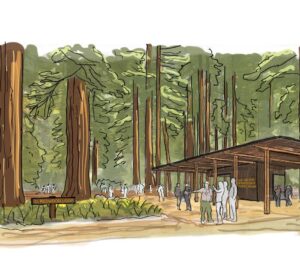

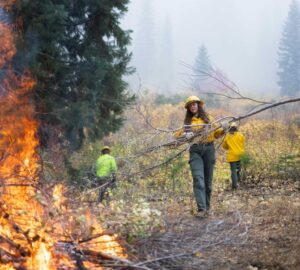
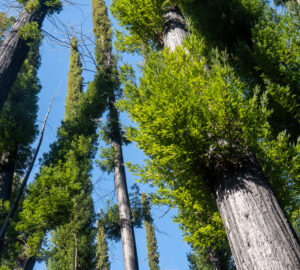
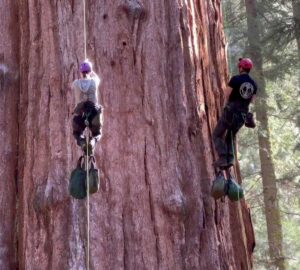
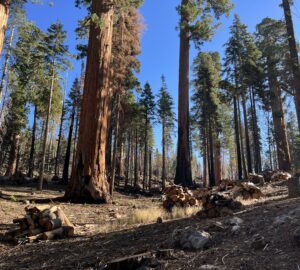
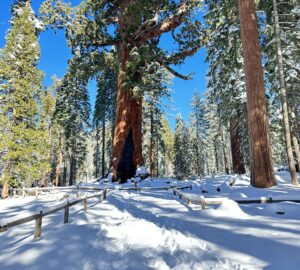
2 Responses to “Bipartisan legislation introduced to save giant sequoias ”
Fred M. Cain
Although I cannot prove it, this is what I believe has very likely come to pass. Although some experts are blaming climate change as 100% of the problem, the real issue is more complicated than that.
Fire was excluded from the forest for at least 120 years or longer. This not only allowed the forest to grow up much too thick and dense to survive, but it might be one leg of a “perfect storm” (to use a worn-out cliché).
For many years, some Forest Service managers had a strict policy that when a smoke was spotted in the morning first daylight, it had to be snuffed out by 10:00 a.m.
There are times when the fire danger is so extreme that this would still be a good policy today. Unfortunately, the Forest Service might no longer have the resources to do this. When a huge, mega fire is burning somewhere, there are few if any personnel left available to snuff out a tiny fire burning on less than an acre. Unfortunately, sometimes tiny fires can and do become big fires.
Contributing to the bad situation is that much of the 20th century was rather wet in the Southwest which only helped feed the dense growth we have today. I distinctly recall several years during the 1960s that were exceptionally wet. The 1980s saw similar albeit briefer wet spell.
With very dense stands, trees can only grow well and thrive during a wet year and it’s clear that we cannot expect a wet year every year. Some of the multi-year “drought” we’re seeing today might actually turn out to be a return to a more normal, long-term weather pattern.
So, there we have the perfect storm. Dense growth caused by a combination of wet weather, fire exclusion and added to that a lack of personnel to snuff out small fires on “red flag days”.
If global temperatures are indeed rising, that’s only going to make matters worse.
However, by thinning the trees and conducting controlled burns, we will be heading in the right direction. Therefore, this proposed legislation is most worthy of our support.
Regards,
Fred M. Cain,
Topeka, IN
Vida Kenk
Please set up a link with a sample letter for constituents to contact their representatives and urge them to vote for this bipartisan legislation.